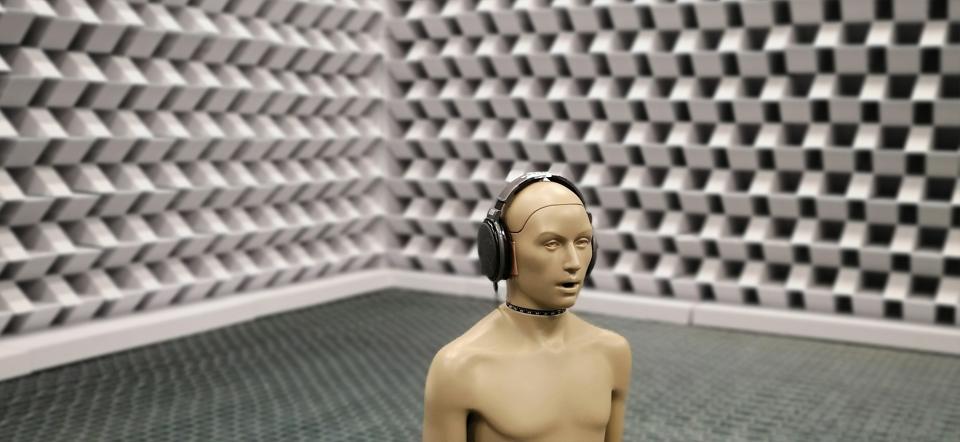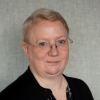Stefania Serafin is a professor at the Department of Architecture, Design and Media Technology at Aalborg University in Copenhagen and is the project leader for the Nordic Sound and Music Computing Network (Nordic SMC). She explains that sound and music computing is not a new area of research.
“Nordic SMC builds on a field of research that was established decades ago. What we do is research sound from different perspectives. It’s not just about sound and technology, but about people’s social lives, about psychology, health, society, and so on. We combine scientific, technological and artistic methods, and it is a fundamentally interdisciplinary field of study.”
What is the aim of the network?
“The aim is to connect Nordic researchers, to collaborate, and to create strong professional communities and networks. We will identify and strengthen the Nordic potential in the field of SMC and create new research pathways and agendas. The participants come from academic environments with different strengths. We have Aalto University in Finland, for example, which has a strong tradition of acoustics, and the KTH Royal Institute of Technology in Sweden, which is good at sonification – the dissemination of information through sound. That is also one of our aims, namely to unite strong academic communities from different countries, and to share infrastructure and exchange know-how, methodologies, and tools.”
“Although the network partners are mostly established researchers, it is also important to support young researchers and research exchanges, so we establish meeting points such as conferences and summer schools, as well as short-time scientific missions”
“The Nordic Region is well-positioned. Generally, we can say that the Nordics have a robust environment for research on sound and music computing.”
Stefania Serafin

What is the purpose of this type of research?
“This research comes with significant societal benefits. Sounds surround us all the time, and all the everyday objects we surround ourselves with have different sounds. We’re interested in the effect sounds have on us, how sounds are used in day-to-day life, and how we can use sound for the benefit of society. We know that sound is important for our emotions and that, when used appropriately, sounds can be used in rehabilitation for example, to enable people to benefit more from medical treatment. One example is in the treatment of Parkinson’s disease. This is a disease that can give people an uneven gait. With the right auditory treatment and use of rhythm, we can help them to have a steadier walking rhythm, which in turn helps patients cope better with the disease.”
“Another example of our work is linked to what happened during the pandemic, when many concerts took place without an audience present. This is likely to be a change that will persist. We’re exploring how sound can be used to enhance the sense of community and sense of presence when performing concerts online.”
We’re surrounded by computer-based sounds on a daily basis. When I lock my phone, when my PC starts up, and when driving. How much research is behind these sounds?
“Sounds are starting to be more carefully designed. Companies are paying more attention to this now, and the big companies have sound designers. As an example, a big problem with electric cars was that pedestrians couldn’t hear them, which led to a series of accidents. Now, car producers are working with artificial sound to improve road safety.”
It seems like your research is at the intersection of innovation and research?
“Yes, that’s right. In particular, companies working with virtual and augmented reality are interested in collaborating with us, but also the culture and music sectors, as well as the health sector. We are co-operating with the Copenhagen Hearing and Balance Centre at Rigshospitalet to explore how the hearing impaired can train using sound and music. And, of course, sound and music computing research was a key component in developments that made the mobile phone the primary music player for younger generations. At Nordic SMC, we’re using high-level scientific research to boost Nordic innovation and competitiveness within SMC-related industries.”
What can you say about the quality of this research in the Nordic countries?
“The Nordic Region is well-positioned. Generally, we can say that the Nordics have a robust environment for research on sound and music computing. Our colleagues from further south in Europe are rather jealous of the conditions under which we operate.”
What is the Nordic added value of Nordic SMC?
“Our network allows several relatively small research groups to work together and make a global impact in the emerging field of sound and music computing. This is possible due to the similarities between the countries and institutions. The ability to share resources in terms of laboratories, knowledge, and extensive student exchanges, together with the support for young researchers has positioned the Nordics as a key hub in the sound and music computing community.”
“Moreover, the ability to collaborate has enhanced the scientific quality of individual research groups that are providing strong and impactful collaborative publications. In addition, the partners are currently working towards aligning educational activities more efficiently, as well as exploring future funding to keep the Nordic SMC network strong and fertile.”
Virtual lab tour
In this video, Stefano Fasciani and Alexander Refsum Jensenius present labs and studios at the Department of Musicology and RITMO Centre for Interdisciplinary Studies in Rhythm, Time, and Motion at the University of Oslo. The video was presented at the Sound and Music Computing (SMC) Conference 2021.






